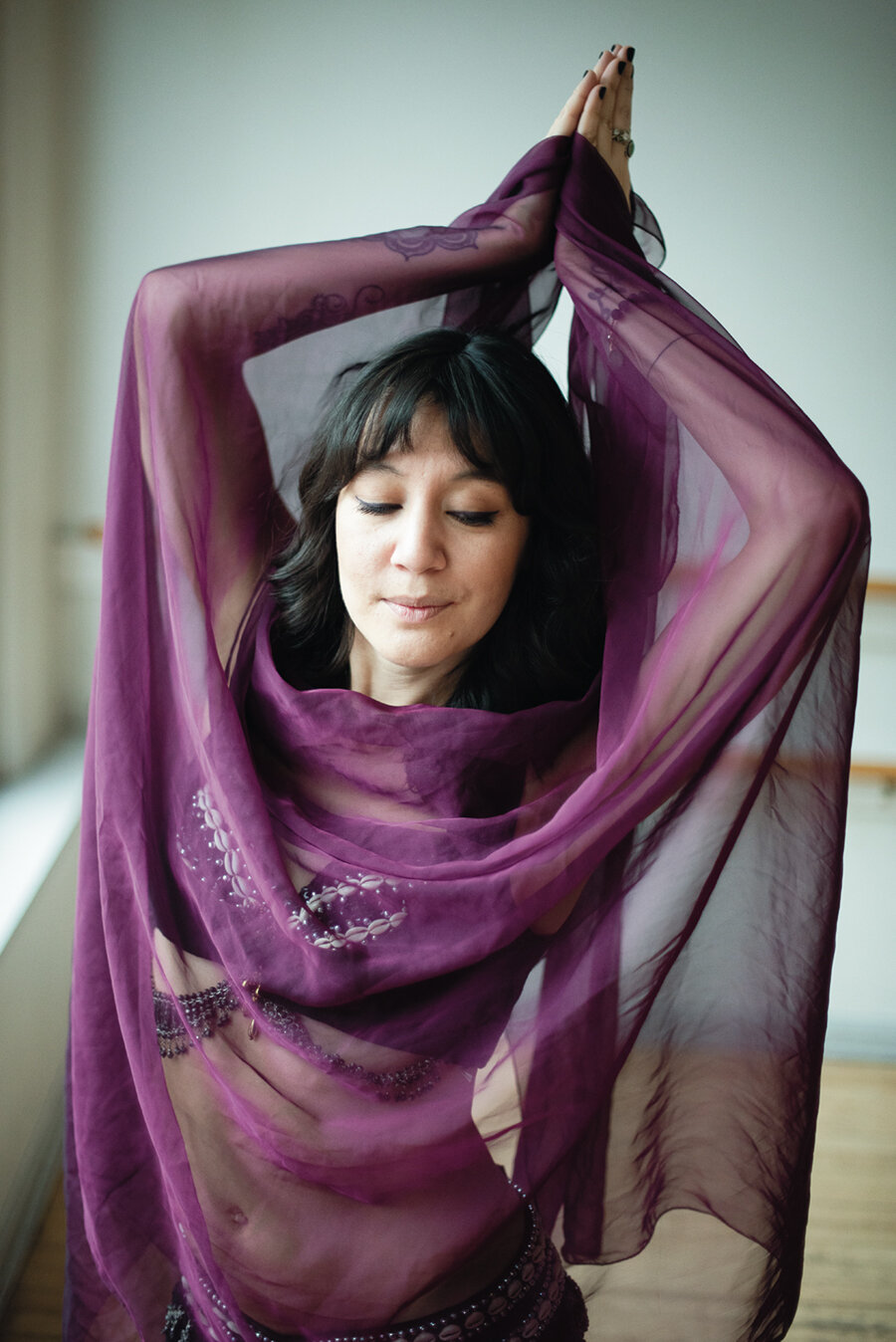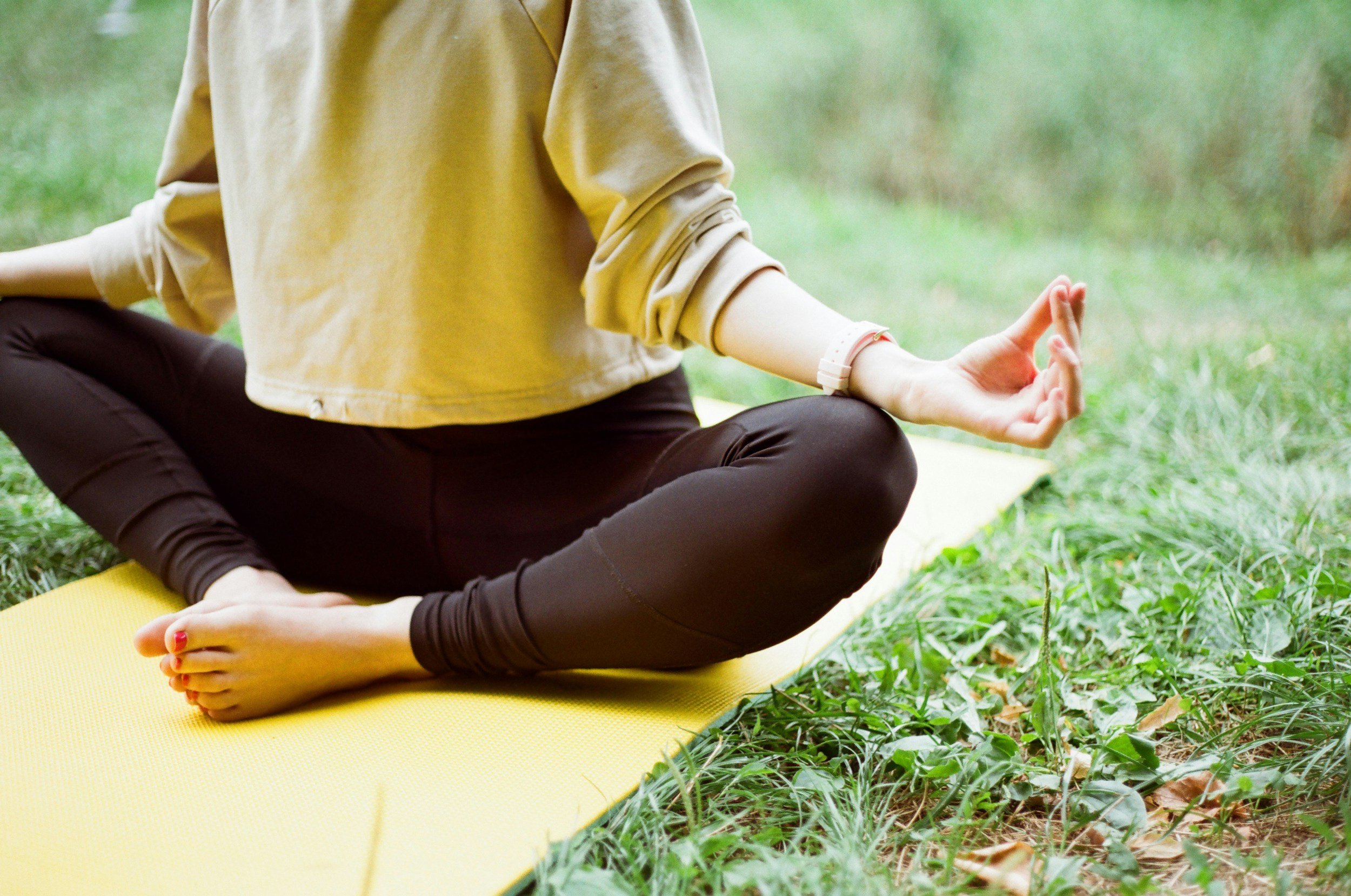By Georgia Gintowt, Photography by Edda Pacifico
Raqs Sharqi, or in Westernized terms, “belly dance,” is a classical style of Egyptian dance utilizing complex movements of the torso, arms, and hips. It is widely known as a playful and sensual dance that celebrates the feminine form. Belly dance movements have been inspired by a long history of dances ranging from within Egypt to other cultures across Eurasia.
Records of the dance are scarce. However, it is clear that certain postures and movements from the current style of Egyptian Raqs Sharqi derive from the dances of traveling nomadic people that eventually landed in Egypt. These traveling people made their living dancing as entertainers, and in each place they settled they assimilated to the culture and adapted new dance techniques to add to their own.
Legends within the belly dance community allude to the dance’s originally being a birthing ritual. Many of the movements associated with belly dance, such as pelvic movements and abdominal undulations, are physically intuitive across cultures, due to their natural stimulation of the abdomen and uterus. Ancient cultures across the world used these movements in fertility rites, and thus was born the legend of belly dance’s originating as a birthing ritual. Yet, all genders and body types can reap the health benefits, which include core strengthening and toning of the arms and legs.
Ever since I was young, I have had a fascination with belly dancers. I lived in a small community in which a troupe of dancers would perform at local events. Every time I saw them perform I was captivated by their simultaneous sensuality and strength. On my own, I would look up videos of belly dancers and practice movements alone in my room. Something about the music, the costumes, and the energy of the movements attracted me.
When I moved to Ann Arbor I found out about Sheila May’s local belly dance classes and decided to make my dream of being a belly dancer come to fruition. I walked into the dance room to find women of all different ages and body types wearing hip scarves and laughing with each other, while Arabic music played in the background. We stood separately in our own spaces but danced as a group, each staring down our own reflection as we watched our bodies move to the music.
As I began my belly dance journey, I experienced for myself why those belly dancers always looked so strong. The dance not only physically changed my body, but it changed the way I felt about myself. Belly dancing was not just an enjoyable way to move, but also a path to becoming more in touch with myself. Each time I struggled to learn a movement, the reward of finally nailing it was a lasting achievement. Even when just walking around the grocery store, shifting my weight as I leaned in to look at a product, I could feel the effects of all the dancing on my body. The abdomen- and hip-focused movements of the dance (the ones that cultures have used throughout centuries to aid in childbirth) made me appreciate the way I was built and the power in my movements. The physical strength, sense of achievement, and overall love for my body made me feel like the strongest version of myself, and I fell in love with belly dance even more.
Western society praises the use of our minds more than our bodies. With so much emphasis on using the internet, we are able to sit down at a desk for hours and use only our minds to complete tasks or learn new information. But, in doing this we lose touch with our physical body, which is what happened to me. Belly dance serves as an outlet for me to build a mind-body connection, in which my thoughts and feelings can physically manifest into fluid movements that represent myself.
Recently, I sat down with my dance teacher, Sheila May, to discuss her thoughts on why belly dance has the power to transform a person's relationship with her body. May, who started dancing at age 20, believes that it’s never too late to start dancing. She says that belly dance is an avenue to accessing your natural bodily movements. “Belly dance, if you boil it down, just equates to moving your body in its natural form. The amazing thing is that I see a lot of people, especially as we’ve progressed through life, forget how to move our body parts in their natural way. And so, there's something about what we get told —‘have good posture, sit up straight, don't let your belly hang out.’ We learn to contract everything and not move and then we forget how to actually move. So for me, belly dance is a real awakening of the mechanics of your muscles, and your joints, and your skeletal structure, and being comfortable with breaking down the barriers that our culture tells us.”
Many traditional Western dances involve two partners moving across the floor in a controlled manner. May loves belly dance because you’re not dependent on anyone else; it’s all about moving within your own space. She strongly believes that everyone should try belly dance at least once, even if they never do it again. She said, “I think when people feel intimidated about taking a dance class or a belly dance class, it's because we all have this vision in our head of what dance is. Dance is moving around a room, executing steps, traveling around the space. Belly dance is so contained to just your own body and your own space that it's really different…”
When we discussed dance as a healing art form, something I’ve personally experienced, May stressed that dancing is a great way to learn to feel comfortable in your own skin while in the presence of others doing the same. She commented, “To be vulnerable while in a room with people of different sizes and different ages can be scary, but if you can let that happen, it's such a huge relief. And to have it drilled into you that no matter what you do, it's okay. You can be vulnerable. No one's going to hurt you. Just be you.”
Awakening dormant movements through belly dance and learning to feel comfortable dancing next to others made me feel confident, accomplished, and comfortable in my own skin. The movements felt natural, yet were still challenging to reawaken. Anyone who belly dances (or dances at all) knows about the art form’s transformative quality. May believes that more people should experience the self love that comes from dance, and she stressed, “How you move your body is how you move your body. It might feel a little bit difficult at first because we haven’t accessed that movement in a really long time, but just believe and have faith and let it happen. I think that whether anybody belly dances ever again after my classes, if they walk away just feeling a little bit more comfortable in their own skin and confident with the movement that their body does —no matter what shape, no matter what age – then that’s a win.”
Due to pandemic restrictions, Sheila May holds livestreaming virtual belly dance classes via Zoom on Sunday, Tuesday, and Wednesday evenings. For more information about Sheila May and her classes, visit www.leilahdances.com.
Related Content:







































































































































































































To build your pelvic power, it is vital to de-stigmatize the pelvis and its functions. No one feels uncomfortable talking about their arm, leg, or stomach muscles. There are dozens of classes and machines at the gym for building flexibility and strength in these areas—yet none for your pelvic floor.